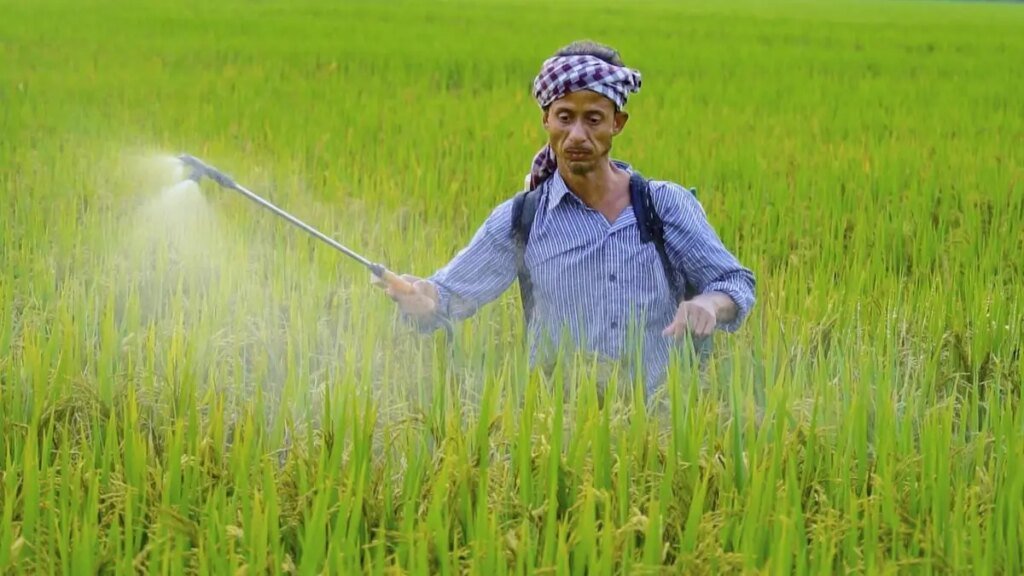The United States’ recent decision to impose a 25 per cent tariff on Indian imports has created ripples across trade corridors but for Indian agriculture, it lands like a thunderclap. This isn’t just a trade move. It’s a stress test of India’s preparedness to compete in a world where market access is increasingly driven by geopolitics, sustainability, and supply chain resilience, not just price and volume.
India’s agricultural exports reached $51.91 billion in FY 2024–25, up 6.47 per cent from the previous year. That’s a milestone worth acknowledging. But beneath the headline lies a structural concern: our export portfolio remains overly reliant on low-value, price-sensitive commodities like rice, sugar, and shrimp, products most vulnerable to tariff escalations.
The U.S. tariff isn’t an isolated blow. It is a symptom of a broader shift in global trade where preferential treatment is earned not only through diplomacy, but through alignment with evolving standards on sustainability, transparency, and strategic reciprocity. India must now decide whether it wants to react defensively or lead decisively.
Beyond protection: Rethinking tariffs as instruments of strategy
India’s tariff framework has historically leaned on protectionism to safeguard smallholder farmers and ensure food security. This approach made sense in a different era. But today, that same framework risks turning inward at a time when the world demands outward engagement.
If India wants to remain globally relevant and build on the momentum of recent export growth, it needs a 21st-century tariff architecture that is strategic, calibrated, and climate-aligned.
Here’s what that could look like:
1. Reciprocity with foresight, not fear
Trade partnerships should be based on a clear-eyed understanding of where India holds global competitiveness such as in digital services, pharmaceuticals, and clean energy and where transition support is needed, such as in agriculture. Granting phased, conditional access in agri-sectors while securing commitments in high-growth domains can ensure that no sector is left behind.
2. Sustainability-linked tariff policies
With the rise of carbon border taxes and green sourcing mandates, future trade access will be won by those who can demonstrate low-emission, traceable, and regenerative practices. India should create tariff incentives for agricultural exports that meet these criteria positioning its farmers not as victims of climate trade barriers, but as beneficiaries of a greener value chain.
3. An integrated agri-trade commission
Tariff decisions should no longer rest with a single ministry. India needs a multi-ministerial agri-trade and tariff commission that brings together Commerce, Agriculture, Environment, and Finance to assess trade-offs holistically: economic potential, environmental impact, farmer welfare, and global positioning.
4. Domestic blueprints for every FTA
Free Trade Agreements must come with implementation roadmaps on the ground, especially for agriculture. This includes phased tariff cuts linked to investments in logistics, cold storage, digital infrastructure, and farmer education. No trade deal should be signed without preparing the last-mile stakeholders it will affect.
5. Support the transition
Farmers cannot carry the burden of global competitiveness alone. They need support: access to sustainable inputs, finance for compliance certification, training on international standards, and market linkages. We must move from protectionism to preparation, ensuring farmers are equipped not just to survive, but to win.
The bigger picture: What this moment demands
The recent tariff escalation is more than a trade friction; it marks a strategic inflection point that exposes the underlying vulnerabilities in India’s agri-export framework. To respond effectively, India must reimagine agriculture not as a sector to shield, but as a globally competitive, climate-resilient growth engine. This begins with moving from volume to value, diversifying beyond undifferentiated bulk commodities to high-margin categories such as organic produce, processed foods, nutraceuticals, and plant-based proteins.
At the same time, we must shift from a system of generalised subsidies to one that incentivises sustainability, supporting farmers who adopt regenerative practices, conserve water, restore soil, and track emissions—practices that increasingly determine market access in a carbon-conscious world. Globally, India must deepen its trade integration by leveraging strategic FTAs, exploring participation in new blocs like the IPEF and CPTPP, and aligning with emerging digital trade frameworks that reduce barriers for e-commerce-driven agricultural exports. Internally, this requires a unified national approach that brings together the ministries of agriculture, commerce, environment, and infrastructure, as well as state governments, to ensure coordinated execution. To reduce vulnerability to geopolitical shocks, India must also broaden its export footprint beyond traditional markets, strengthening ties with Africa, Southeast Asia, the Middle East, and Latin America. And most importantly, we must place the farmer at the centre of this transformation, not as a passive beneficiary, but as an empowered agri-entrepreneur with access to knowledge, finance, technology, and global markets. India’s future in agriculture will be shaped not by how we defend the status quo, but by how boldly we design for the world ahead.
From tariff Tturbulence to trade transformation
India’s agricultural sector is no stranger to adversity, but today’s challenge is different. The 25% U.S. tariff is not just a trade hurdle; it’s a test of vision, policy agility, and national resolve.
This is our moment to transition from reactive policymaking to a proactive global strategy that embraces sustainability, empowers farmers, and repositions India as a credible, climate-smart agri-export leader. Tariffs must no longer be tools of defence, but instruments of direction.
More Like This
Published on August 3, 2025

